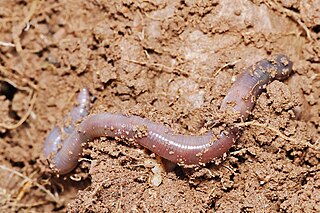Fun facts about Big Cities, Sleep, Starfish, Flags, Hindi, Bible Stories, Van Gogh and more!
Wednesday, May 8, 2013
Tuesday, May 7, 2013
Maxilla
Let's learn the other parts of the facial skeleton!
We've already learned about the mandible.
Next up is the maxilla, which is your upper jaw and behind your nose.

(from: wikipedia - maxilla)
Monday, May 6, 2013
Venezuela, Suriname, Guyana, French Guiana
We just learned about the countries of Peru and Ecuador.
The last 4 countries that make up the northern part of South America are Venezuela, Surinam, Guyana and French Guiana
Venezuela got it's name from traveler Amerigo Vespucci, who thought the many houses on water reminded him of Venice, Italy.
It is the site of Angel Falls, the highest waterfall in the world.


(from: wikipedia - venezuela)
Suriname was originally a Dutch colony, and is the only country in North and South America where Dutch is the official language.

(from: wikipedia - suriname)
Guyana is the only South American country where the official language is English.
The original land called Guiana was much larger and included Guyana, Suriname, French Guiana, and parts of Colombia, Venezuela and Brazil.

(from: wikipedia - guyana)
French Guiana is a territory controlled by France, and it has the Guiana Space Centre there, the place that Europe usually uses to launch rockets into outer space.
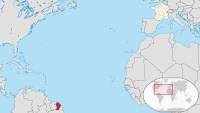
(from: wikipedia - french guiana)
Sunday, May 5, 2013
Ruth
Let's keep learning about the other Books of History in the Old Testament.
We already learned about Joshua and Judges.
Next up is Ruth.
During the days from the book of Judges, an Israelite woman named Naomi had a husband and two sons.
Both of the sons married women that were from the land of Moab, where they didn't know about God's laws and his people.
Then Naomi's husbands and her two sons both died!
She was alone, and only her one daughter in law Ruth stayed with her.
Naomi and Ruth both returned to Bethlehem, and there Ruth worked very hard to help gather leftover crops, and because of her hard work a man named Boaz noticed her and ended up marrying her!
Ruth was a very important mother, because her great grandson was David who went on to be king of Israel.

(from: wikipedia - ruth (biblical figure))
Saturday, May 4, 2013
Atmosphere
We just learned about how meteoroids become meteors or shooting stars when they get close to a planet.
They burn up because of a planet's atmosphere.
The atmosphere is the air up in our sky!
Just think about how a strong wind feels blowing on your face.
That wind is maybe blowing at 20 miles per hour.
Now imagine that wind blowing at 100,000 miles per hour!
That's how fast some meteors travel when they enter Earth's atmosphere,
and they burn up because they're going so fast they can't handle that kind of wind.

(from: wikipedia - atmosphere)
Friday, May 3, 2013
French - Her hands are soft
We've now learned that This house is big is Cette maison est grande
The chair is small is La chaise est petit,
My drink is cold is Ma boisson est froide,
Your food is hot is Votre nourriture est chaud,
Their car is tall is Leur voiture est haut,
and Our table is short is Notre table est courte.
To say Her hands are soft, you would say Ses mains sont douces.
Her - Ses - sounds like say /?/
hands - mains - sounds like mahnz /?/
are - sont - sounds like soh-n /?/
soft - douces - sounds like doose /?/
All together it sounds like say mahnz soh-n doose /?/
Thursday, May 2, 2013
Acceleration
Last time we learned how kinematics is the study of measuring how things move.
We learned about distance, time and velocity.
There's another fun thing we can measure, called acceleration.
Imagine you are in a race car at the starting line.
As soon as the race starts you are going to speed up to go as fast as you can, until you cross the finish line.
How fast were you going right before the race started?
Your velocity was zero, (0 mph) because you weren't moving.
And by the time you crossed the finish line maybe you were going super fast,
so your velocity was 100 mph.
When we want to measure how fast you sped up, that's called acceleration.
We usually use the letter a for acceleration.
We're measuring how much velocity (v) changes over time (t).
Velocity is in miles per hour (mph) or meters per second (m/s).
Time is in hours (h) or seconds (s).
So m/s / s = m/s^2, meters per second per second or meters per second squared.
It might sound funny, but that's how we measure how fast we changed from one speed to another.

(from: wikipedia - acceleration)
Wednesday, May 1, 2013
Kangaroos
We just learned about the Spider Monkey.
Kangaroos are a type of animal known as a marsupial.
Marsupials carry their babies in a pouch. Baby kangaroos are known as joeys.

(from: wikipedia - kangaroo)
Tuesday, April 30, 2013
Mandible
We've now learned about all the parts of the neurocranium area of the cranium like the Temporal Bone.
Remember the other part of the cranium was the facial skeleton, also called the splanchocranium or viscerocranium.
There are several parts to that bone as well, such as the mandible.
The mandible is also known as your jawbone. It's the part of your skeleton that holds on to your teeth.

(from: wikipedia - mandible)
Monday, April 29, 2013
Peru and Ecuador
We just learned about the country of Chile and Bolivia.
Two more countries to learn about in South America: Peru and Ecuador.
Peru is on the Western coast of South America.
The largest river in the world, the Amazon River runs through the middle of this country.

(from: wikipedia - peru)
Ecuador is just North of Peru.
It has some old ruins from when the Incas lived there before the Spanish took over.
Also interesting about Ecuador is that they use the same type of money as the United States.
Most other countries have their own currency like pesos, reals or euros,
but Ecuador uses the US dollar as their money.

(from: wikipedia - ecuador)
Sunday, April 28, 2013
Judges
Let's keep learning about the other Books of History in the Old Testament.
We already learned about Joshua.
Next up is Judges.
After Joshua dies at the beginnng of the book of Judges, the people of Israel start to disobey God.
So God sends them many different rulers over many years, to serve as Judges for his people.
Some of them are very famous, like:
Gideon - A great warrior for God who led only a few hundred men to battle and defeated thousands.
Samson - A warrior for God that was so strong he couldn't be defeated unless his hair was cut.
He once killed a lion with his bare hands!

(from: wikipedia - book of judges)
Saturday, April 27, 2013
Meteorite
We now know that an asteroid is a big rock flying in space,
a meteoroid is a small chunk broken off of an asteroid
and a meteor is a chunk of that meteoroid that burns up in the sky when falling to a planet.
So what's a meteorite then?
If a meteor enters a planet's sky and doesn't burn up all the way,
sometimes it actually hits the planet.
When it actually hits the planet, it's called a meteorite!
Most meteorites are really small like a baseball and don't cause any damage, others are bigger than a car!

(from: wikipedia - meteorite)

Friday, April 26, 2013
French - Our table is short
We've now learned that This house is big is Cette maison est grande
The chair is small is La chaise est petit,
My drink is cold is Ma boisson est froide,
Your food is hot is Votre nourriture est chaud
and Their car is tall is Leur voiture est haut
.
To say Our table is short, you would say Notre table est courte.
Our - Notre - sounds like nuh-tuh-ah /?/
table - table - sounds like tah-bluh /?/
is - est - sounds like ay /?/
short - courte - sounds like coh-ut /?/
All together it sounds like nuh-tu-ah tah-bluh ay coh-ut /?/
Thursday, April 25, 2013
Kinematics
We've learned now about measuring distance, time and velocity.
A word for the way these things work together is called kinematics,
which really just means a way to understand moving things.
Using kinematics, we can use the things we can measure in a special way,
we can use two of them to figure out the third one!
So if you drive in a car, and you know how fast you went (velocity v)
and how long it took you to get somewhere (time t)
you can figure out how far you went! (distance d)
Let's say we went 10 miles per hour (v = 10mph)
and we went for 2 hours (t = 2h)
We can figure out our distance (d) by multiplying v times t.
If you know some algebra, it looks like this:
d = v * t
d = 10mph * 2h
d = 20 miles
We can do the same thing with time, but we divide our distance by our velocity:
t = d / v
And we can get velocity if we have distance and time.
d = v * t
Fun!

(from: wikipedia - kinematics)
Wednesday, April 24, 2013
Temporal bone
We learned before that the frontal bone, parietal bones, occipital bone, ethmoid bone and sphenoid bone are part of the neurocranium.
The last part of the neurocranium is the temporal bone, located on the side of your head at your temple.

(from: wikipedia - temporal bone)
Spider Monkey
Is a Spider Monkey a cross between a spider and a monkey?
Nope! It's just a monkey with really long arms and legs,
so when it climbs through the trees it sort of looks like a big black spider.

(from: wikipedia - spider monkey)
Monday, April 22, 2013
Chile and Bolivia
Two more countries to learn about in South America: Chile and Bolivia.
Chile is a very long thin country along the West coast of South America.
It borders the Andes mountains, and at the South of the continent,
is a tip of land called Cape Horn that sailors used to have to sail around
until the Panama Canal was constructed in Central America.

(from: wikipedia - chile)
Bolivia is an inland country that also shares part of the Andes mountain range.
It is also home to Spider Monkeys!.

(from: wikipedia - bolivia)
Spider Monkeys are called that because they have very long arms and legs.
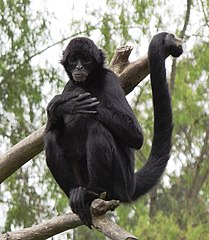
(from: wikipedia - spider monkey)
Sunday, April 21, 2013
Joshua
We've just finished up learning about the five books that make up the Old Testament books of law
Now let's learn about the next part of the Old Testament, the books of history.
There are 12 books of history: Joshua, Judges, Ruth, 1 Samuel, 2 Samuel, 1 Kings, 2 Kings, 1 Chronicle, 2 Chronicles, Ezra, Nehemiah, Esther.
Let's start with the book of Joshua.
Remember that at the end of Deuteronomy Moses dies and Joshua becomes the leader of the Israelites.
In this book, Joshua leads the Israelites into God's promised land of Canaan,
and conquers all the cities.
The first city conquered is Jericho, and the Israelites conquer it using God's power
by marching around the city 7 times and then blowing their trumpets
and yelling at the wall to make it come crashing down!

(from: wikipedia - book of joshua)
Saturday, April 20, 2013
Friday, April 19, 2013
French - Their car is tall
We've now learned that This house is big is Cette maison est grande
The chair is small is La chaise est petit,
My drink is cold is Ma boisson est froide
and Your food is hot is Votre nourriture est chaud.
To say Their car is tall, you would say Leur voiture est haut.
Their - Leur - sounds like leh-uh /?/
car - voiture - sounds like voh-ee-choo-ah /?/
is - est - sounds like ay /?/
tall - haut - sounds like ah-oh /?/
All together it sounds like leh-uh voh-ee-choo-ah ay ah-oh /?/
Thursday, April 18, 2013
Velocity
We've learned now about measuring distance and time.
Another thing we can measure is called Velocity.
Velocity means speed, or how fast you are going.
It is measured by looking at how much time it takes you to go a distance.
So if you run for 20 meters and it takes you 10 seconds,
then you would say that your velocity was 20 meters per 10 seconds.
If you know your division, you can do 20 / 10 = 2
and then say your velocity was 2 meters per 1 second.
Sometimes we use just one letter for time and distance,
m = meters
s = seconds
So you could write 2 meters per 1 second as 2 m/s
You may also have seen the letters mph before,
that means you are measuring velocity in miles per hour,
and saying how many miles you can go in one hour at the speed you are going.

(from: wikipedia - velocity)
Wednesday, April 17, 2013
Dung Beetle
The Dung Beetle is a type of insect that collects dung to survive.
If you didn't already know this, dung is another word for poop!

(from: wikipedia - dung beetle)
Some dung beetles eat the dung, some lay their eggs in it, and some others just live in it.
Many of the beetles are rollers meaning they wait until the animal has pooped, and they roll the dung into a ball.
Tuesday, April 16, 2013
Sphenoid bone
We learned before that the frontal bone, parietal bones, occipital bone and ethmoid bone are part of the neurocranium.
Also part of the neurocranium is the Sphenoid Bone, located right behind your facial skeleton.

(from: wikipedia - sphenoid bone)
Monday, April 15, 2013
Uruguay and Paraguay
We just learned about the country of Argentina.
Two other countries in South America are Uruguay and Paraguay.
Why do their names sound so much alike?
It's because the guay part of their name means river,
and the countries were both named for their rivers.
Paraguay:

(from: wikipedia - paraguay)
Uruguay:
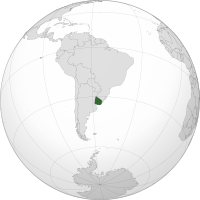
(from: wikipedia - uruguay)
Uruguay means river of the painted birds
and Paraguay means river that flows to the sea.
Sunday, April 14, 2013
Deuteronomy
Let's keep learning about the other Books of Law in the Old Testament.
We already learned about Genesis, Exodus, Leviticus and Numbers.
The last of the five books of law is Deuteronomy.
The word Deuteronomy means second law.
Just like Leviticus there are many laws listed in this book.
At the end of Deuteronomy Moses dies and Joshua becomes the leader of the Israelites.
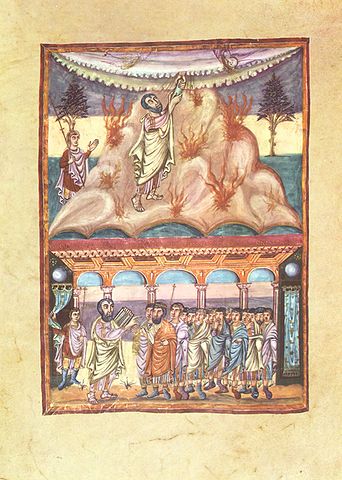
(from: wikipedia - book of deuteronomy)
Saturday, April 13, 2013
Friday, April 12, 2013
French - Your food is hot
We've now learned that This house is big is Cette maison est grande
The chair is small is La chaise est petit,
and My drink is cold is Ma boisson est froide.
To say Your food is hot, you would say Votre nourriture est chaud
Your - Votre - sounds like vuh-tuh-ah /?/
food - nourriture - sounds like noo-uh-ee-choo-ah /?/
is - est - sounds like ay /?/
hot - chaud - sounds like show /?/
All together it sounds like vuh-tuh-ah noo-uh-ee-choo-ah ay show /?/
Thursday, April 11, 2013
Time
Last time we learned about measuring Distance.
Another thing we can measure is called Time.
We can look at a clock to see what time it is,
and we can also use the clock to count how much time has passed.
So if you get in the car and drive to Gramma's house,
if it takes 30 minutes then that is the time measured.
Time is usually measured in seconds, and there are 60 seconds in each minute.
So if you know your math, you can take 30 times 60 = 18,000 seconds.

(from: wikipedia - clock)
Wednesday, April 10, 2013
Red Panda
We just learned about the Turtle Scutes.
The Red Panda just might be the cutest animal in the world,
but would it make a good pet?

(from: wikipedia - red panda)
It's only a bit larger than most cats, and smaller than most dogs,
so who knows why this adorable fuzzy crawler hasn't made its way into homes yet.

Some people believe that Indira Gandhi kept one as a pet, so anything's possible!

The red panda doesn't like hot temperatures, and likes to stay up at night, which means it's nocturnal.
Tuesday, April 9, 2013
Ethmoid Bone
We learned before that the frontal bone, parietal bones and occipital bone are part of the neurocranium.
Also part of the neurocranium is the ethmoid bone, located right behind your nose and eyeballs.
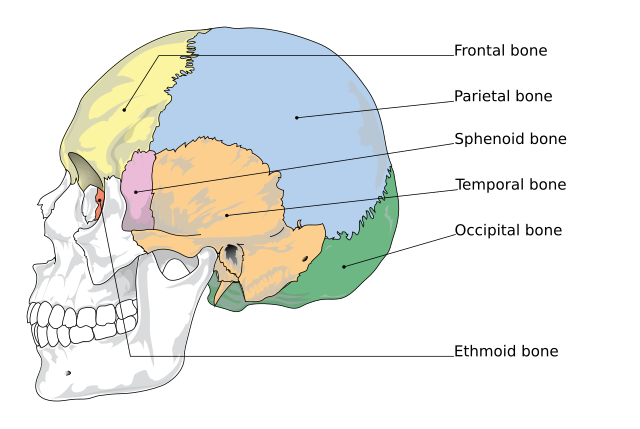
(from: wikipedia - ethmoid bone)
Monday, April 8, 2013
Argentina
We've now learned about the South American countries Brazil and Columbia. Now let's learn about Argentina.
It's the second biggest country in South America by size,
and is third in number of people.
They speak Spanish in Argentina, and by size it is the largest Spanish speaking country in the world!

(from: wikipedia - argentina)
There was a musical play called Evita created about one of the country's
most famous politicians, Eva Perón
Sunday, April 7, 2013
Numbers
Let's keep learning about the other Books of Law in the Old Testament.
We already learned about Genesis, Exodus and Leviticus.
Next up is Numbers.
The book Numbers is mostly about counting the people of the lord,
and God's people wandering in the desert and complaining too much.
Because they complained too much, God said that not all of them could enter the promised land,
and that Joshua instead of Moses would lead them into the promised land.

(from: wikipedia - book of numbers)
Saturday, April 6, 2013
Asteroids
We learned last time about the all of the things like Pluto that were floating around in the Kuiper belt.
All of the things floating around in our solar system that aren't planets,
are called asteroids.

(from: wikipedia - asteroid)
Friday, April 5, 2013
French - My drink is cold
We've now learned that This house is big is Cette maison est grande
and The chair is small is La chaise est petit.
To say My drink is cold, you would say Ma boisson est froide
My - Ma - sounds like Mah /?/
drink - boisson - sounds like boo-ay-soh /?/
is - est - sounds like ay /?/
cold - froide - sounds like foo-ah-d /?/
All together it sounds like Mah boo-ay-soh-n ay foo-ah-d /?/
Thursday, April 4, 2013
Distance
We just learned about the difference between Solid, Liquid and Gas.
Let's talk about measuring things!
First we can learn about Distance.
That means how far it is from one place to the next.
So if you drive in your car for 10 miles, then the distance is 10 miles.

(from: wikipedia - taxicab geometry)
You can also measure distances in meters.
A meter is a little bigger than three feet long.
Wednesday, April 3, 2013
Turtle scutes
We just learned about the Wolverine.
When you look at a turtle's shell and see the lines marking out different shapes on it's back or belly, those areas are called scutes
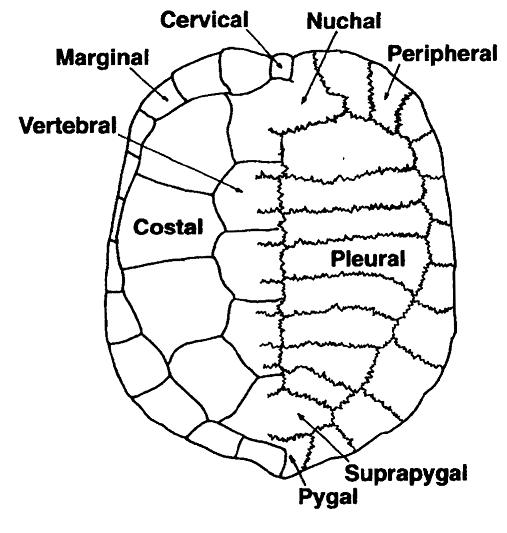
(from: wikipedia - turtle shell)
The scutes are like scales on a snake, and each scute has a name for where it is on the shell, like cervical, vertebral or marginal.
The scutes are made of keratin, the same as a rhino horns, whale baleen plates and our fingernails and hair!
Tuesday, April 2, 2013
Occipital Bone
We learned before that the Frontal Bone and Parietal Bones are part of the Neurocranium.
Also part of the neurocranium is the occipital bone, located in the back of your head.
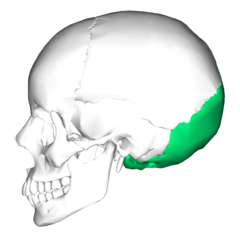
(from: wikipedia - occipital bone)
Monday, April 1, 2013
Columbia
The second largest country in South America right after Brazil is Columbia.

(from: wikipedia - columbia)
46 million people live in Columbia, and they speak Spanish.
To say hello you would say Hola.
Columbia is well known for producing coffee, flowers, emeralds, coal, and oil.

Sunday, March 31, 2013
Leviticus
Let's keep learning about the other Books of Law in the Old Testament.
We already learned about Genesis, and Exodus. Next up is Leviticus.
The word Leviticus just means a book about the Levites.
The Levites were the group of people that God picked to be in charge of keeping his laws.
So the book of Leviticus is mostly about rules or laws that God made for his people.
There are over 200 different laws in Leviticus!

(from: wikipedia - book of leviticus)
Saturday, March 30, 2013
Kuiper Belt
Remember we talked about Pluto and how it's part of something called the Kuiper belt?
(kuiper rhymes with viper)
Well it turns out that lots of things are floating around in that area,
over 100,000 different things called Kuiper Belt Objects or KBO for short.
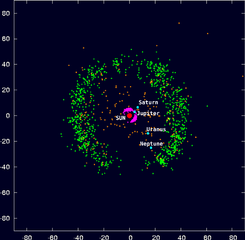
(from: wikipedia - kuiper belt)
They come in all sizes, some even close to the size of Pluto!
Friday, March 29, 2013
French - The chair is small
We learned last time that to say This house is big
you would say Cette maison est grande
Let's learn more about the things we see every day.
To say The chair is small you would say La chaise est petit
The - La - sounds like lah /?/
chair - chaise - sounds like shez /?/
is - est - sounds like ay /?/
small - petit - sounds like puh-tee /?/
All together it sounds like lah shez ay puh-tee /?/
Thursday, March 28, 2013
Solid, Liquid, Gas
We just learned a little about Light Bulbs.
Have you ever gone sledding in the snow?
What about swimming in a pool?
Have you ever seen water boil on a stove?
What about a bright neon sign for a store?
If so, then you've seen the four types of matter in our world:
solid, liquid, gas and plasma

(from: wikipedia - states of matter)
We see water all the time in three of the four types.
An ice cube is water when it's solid, and the steam that rises from boiling water is actually the water turning into a gas.
There are lots of types of solids made from things other than water,
like the dirt you walk on, or the chair you sit in.
Solids can turn to liquids when they get hotter, like lava is actually rock as a liquid!
Sometimes gases are really hot like steam from water,
but sometimes gases are just normal temperature like the air we breathe.
Plasma is what happens when a gas gets really hot, and when the parts of the gas get really full of energy, and whenever you see a bright neon sign, it's filled with plasma!

(from: wikipedia - neon sign)
Wednesday, March 27, 2013
Wolverine
We just learned about the Arctic Fox.
Don't judge this animal by his size!
The Wolverine is known to be a very ferocious animal,
and even sometimes will try to fight a bear or wolf for food!

(from: wikipedia - wolverine)
The wolverine is also famous.
One of Michigan's nicknames is the Wolverine State and the University of Michigan uses the wolverine as it's mascot because of it's fierce reputation.
Subscribe to:
Posts (Atom)
